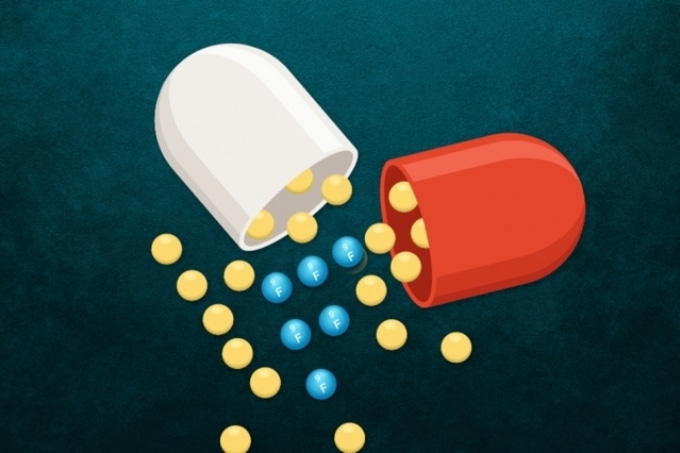Jan 24 2017
 MIT and Boston College chemists have devised a way to attach fluorine-containing chemical groups to drug compounds, which could make the drugs more potent. CREDIT: Christine Daniloff/MIT.
MIT and Boston College chemists have devised a way to attach fluorine-containing chemical groups to drug compounds, which could make the drugs more potent. CREDIT: Christine Daniloff/MIT.
As drugs that comprise of one or more fluorine atoms tend to be more powerful, highly stable, and easily absorbed by the body, drug developers would like to incorporate fluorine or trifluoromethyl, a fluorine-comprising unit, into experimental drugs. However, this process has been challenging.
A team of chemists from MIT and Boston College have recently developed an innovative catalyst with the ability to integrate a trifluoromethyl group with a variety of organic molecules. Accessibility of such selective and highly efficacious catalysts should enable rapid development of potential innovative fluorinated drugs, such as anticancer agents and antibiotics, for further analysis.
The source of fluorine atoms used in the new catalysts is a nontoxic foam-blowing agent, traditionally used to spread insulation.
The fact that this fluorinated compound behaves in this reaction like its nonfluorinated analog is really amazing.
Richard Schrock, Frederick G. Keyes Professor of Chemistry at MIT
The paper has been published in the in the January 23rd issue of Nature.
Another senior author of the paper is Amir Hoveyda, who is the Vanderslice Millennium Professor of Chemistry at Boston College. Ming Joo Koh, a Boston College graduate student, is the lead author of the paper. Jonathan Lam (MIT postdoc), Jakub Hyvl (former MIT postdoc), Thach Nguyen (Boston College graduate student) and Sebastian Torker (Boston College senior research fellow) are the other authors of the paper.
Making and Breaking Bonds
Schrock has dedicated a large part of his career developing catalysts with the potential to break and make double bonds between carbon atoms in order to develop innovative types of carbon-carbon double bonds. He won the Nobel Prize for chemistry in 2005 for developing the first catalyst with the ability to carry out such a reaction, the so-called olefin metathesis.
Chemists can exploit the reaction to combine different chemical groups to the carbon atoms forming the double bond, a significant process in the manufacture of fuels, pharmaceuticals, and other chemicals.
For the research published in Nature, the team headed by Schrock and Hoveyda could successfully discover and demonstrate the utility of a class of catalysts comprising molybdenum, a metal commonly used in steel manufacturing. The molybdenum contained in the new catalysts is combined with four other chemical groups - or five groups in an inactive resting state. The activity of the catalysts can be influenced by altering the chemical groups.
Successive investigations carried out on the catalysts showed that they can initiate a specific reaction involving a carbon-carbon double bond, where one carbon is also combined with a trifluoromethyl group - one carbon atom attached to three fluorine atoms. Upon adding the catalyst to a compound with such a chemical structure, the double bond and trifluoromethyl group can be transferred into another organic molecule.
In addition, when compared to catalysts that the team previously developed, the new complexes could efficiently initiate reactions that generate alkenes (molecules including a carbon-carbon double bond) including a single halogen atom with a specific configuration.
Using the new catalysts, the researchers successfully introduced trifluoromethyl groups into a range of organic molecules. These reactions took about 2 to 12 hours to complete. Also, catalysts containing molybdenum attached to a chlorine atom were found to be particularly effective.
These catalysts are very reactive for reasons we are beginning to understand, and they do reactions that have never been done before.
Richard Schrock, Frederick G. Keyes Professor of Chemistry at MIT
More Potent Drugs
The fact that numerous potent drugs include trifluoromethyl groups motivates the researchers to add these groups to the exisiting drugs to investigate whether these groups provide the drugs with new functions or whether they render them more powerful.
There are cases where by substituting an organic group like a methyl group with a trifluoromethyl group, it completely changes the mode of action, so this reaction allows easy access to a much larger variety of potential drug candidates. A lot of these compounds are unknown because people didn’t know how to make them.
Amir Hoveyda, Boston College
In order to reveal the practicality of this technique, the research team demonstrated that the trifluoromethyl groups could be added to a number of drugs, including a diabetes drug, antibiotics, an antimalarial drug, and a topical painkiller.
The study has been described as a “beautiful work” by Phil Baran, professor of chemistry at the Scripps Research Institute, who was not involved in it.
“I think it’s a great example of how collaboration between people with very different but overlapping research interests can turn into something with groundbreaking results,” stated Baran.
Schrock intends to develop more stable catalysts with the ability to carry out the same type of reactions at much lower concentrations. Partnering with Hoveyda, Schrock started a firm called XiMo in order to develop tungsten and molybdenum catalysts for metathesis reactions for the manufacture of compounds such as pharmaceuticals, plastics, and fragrances.
The John LaMattina Fund and the National Institutes of Health funded the research.